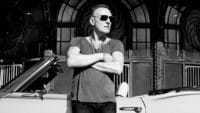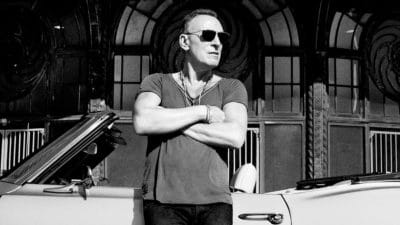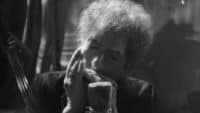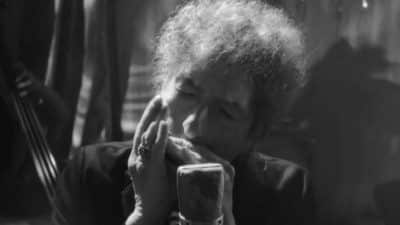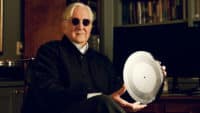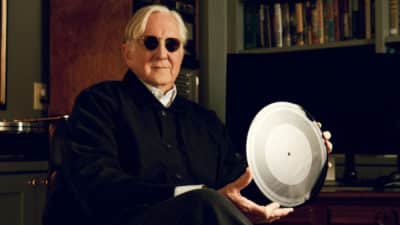Music
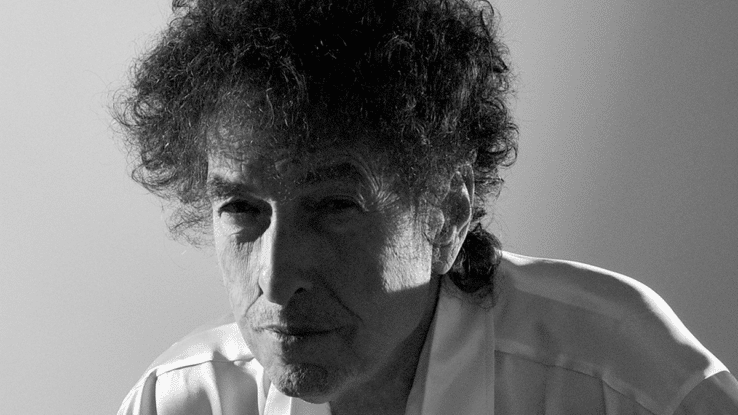
Guide
Getting Into… Bob Dylan
As the original rolling stone prepares to head back on tour, we take a look at the best inroads to take if you want to get more familiar with one of the most influential musical artists of all time
“The first time I heard Bob Dylan, I was in the car with my mother, and on came that snare shot that sounded like somebody’d kicked open the door to your mind…” remembers Bruce Springsteen. “The way that Elvis freed your body, Dylan freed your mind, and showed us that because the music was physical did not mean it was anti-intellect. He had the vision and talent to make a pop song so that it contained the whole world. He invented a new way a pop singer could sound, broke through the limitations of what a recording could achieve, and he changed the face of rock’n’roll for ever and ever”.
It’s hard to imagine what the musical landscape would look like without Dylan. Would we have Springsteen? The Beatles? Bowie? The Rolling Stones? Eminem? All of whom have publicly admitted the huge debt they owe him. Take Dylan out of the 20th century and you sever the through-lines to half of today’s biggest and most popular artists – let alone leaving modern history with a hole that few other cultural icons are capable of filling.
Now returning to European stages to finish off the Rough And Rowdy Ways tour he started in 2021, Dylan still feels as vital as ever. If you’re new to Dylan though, it’s tough to know where to start.
Sixty something years of iconography is a pretty big hill to climb, so if you’re looking for the easy way up, read on…
The music
Obviously the first and last way into Dylan is always going to be through his music. Releasing his first album (Bob Dylan) in 1962 after two years skirting the Greenwich Village folk scene, Dylan went on record one of the most intimidating back catalogues around – including 39 studio albums, 15 live records, 29 compilations, seven soundtracks, 22 box sets and (at least) 16 bootlegs.
Albums like The Freewheelin’ Bob Dylan, Bringing It All Back Home, Highway 61 revisited, Blonde On Blonde and Blood On The Tracks would become cultural touchstones of the 60s and 70s, while Dylan’s latest, Rough And Rowdy Ways, peaked back at No.1 in 11 different countries.
If you’re new to Dylan it’s tempting to reach straight for a Best Of, but starting with a couple of the earlier albums is a much better idea. Few artists are as closely tied to a time and place, with Dylan’s music tightly wound up in the counter-cultural waves of the history he helped shape, so spend a few hours with any of the titles above and hear the sound of an entire generation evolving, rebelling, screaming and fading away.
Also, don’t listen to them on your phone. Ever committed to analogue, his last official release (a re-release of ‘Blowin’ In The Wind’) was put out in its own custom walnut and white oak cabinet and sold for £1.5 million…
The influences
Dylan’s influence stretches both ways. His legacy continues to shape modern music, but his roots shape the heart the story – with his own records sitting right in the middle of a bridge between the past and the present.
Contemporaries like Karen Dalton, Gordon Lightfoot, The Flying Burrito Brothers, Randy Newman, Joan Baez and Patti Smith are essential listens, but Dylan’s music also reaches further back to the likes of Ma Rainey, Henry Arlen, Hank Williams, Ramblin’ Jack Elliott, John Lee Hooker, Robert Johnson and, of course, Woody Guthrie – the hero a 19-year-old Dylan idolised so much he dropped out of college and hitchhiked to New York to try and find.
If you want a good primer on Dylan’s influences, check out any of the recordings made of his Theme Time Radio Hour between 2006 and 2009 – a weekly one-hour satellite radio show that Dylan hosted just so he could play all his favourite old lost records. A few good compilations are still on streaming services, but you can also still hear all 102 episodes for free here.
The films
D. A. Pennebaker’s 1967 concert film, Don’t Look Back, is the first place to start with archival Dylan footage – and it also happens one of the best and most influential documentaries ever made about anything. Pennebaker laid a lot of responsibility on every other film that followed, but Martin Scorsese picked up the gauntlet twice – first with 2005’s No Direction Home (a fantastic history on the early 60s period that ended when Dylan first plugged his acoustic guitar into an amp, flipping the folk scene on its head), and again with 2019’s Rolling Thunder Revue, covering his 1975 tour.
And then there’s the acting. Always slightly distracting and permanently weird, Dylan’s film roles (in the likes of Pat Garrett & Billy The Kid, Catchfire and Masked And Anonymous) are curios that sit oddly alongside his musical career – although Pat Garrett is all the better for having him, and packs a killer soundtrack.
Better still is Todd Haynes’ brilliant biopic, I’m Not There – casting Christian Bale, Cate Blanchett, Marcus Carl Franklin, Richard Gere, Heath Ledger and Ben Wishaw all as different facets of Dylan’s personality. The film was also responsible for getting a new bulk of the Basement Tapes re-released alongside the film’s soundtrack, filling in a big gap in a then cloudy back catalogue.
The side projects
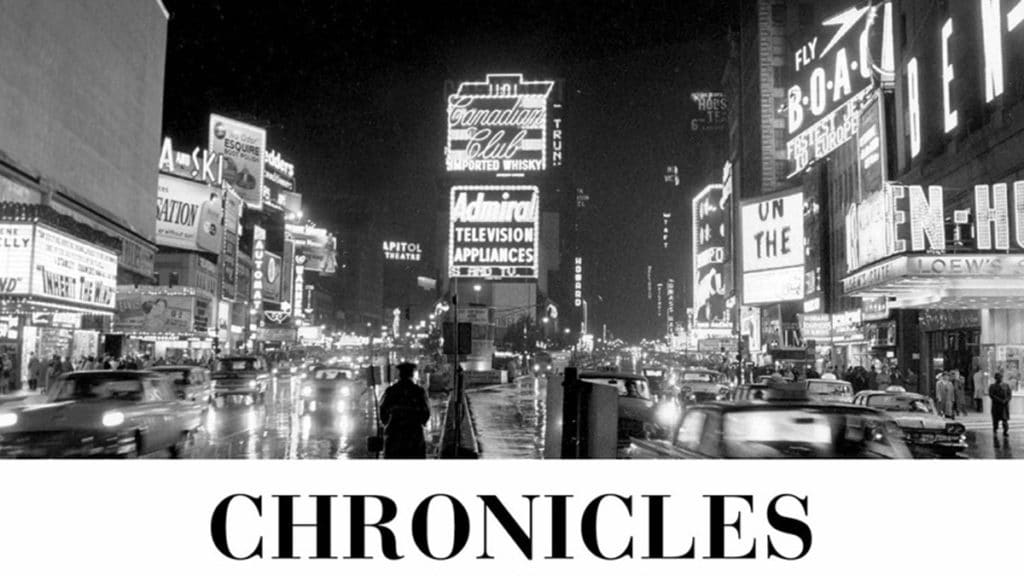
Someday, maybe long after the Rough And Rowdy Ways tour has been and gone, Dylan might finish writing the book he started in 2004. Chronicles: Volume One still stands as one the best music autobiographies around (and the best account of the Greenwich Village scene that isn’t Inside Llewyn Davis), but we still only have the first part of a planned trilogy that might never happen.
Dylan released his first book, Tarantula, back in 1971, collating the experimental prose poetry he’d been writing since ’65 (leaning hard into the styles of Kerouac, Burroughs and Ginsberg that had clearly also been influencing his songwriting at the time). Writings And Drawings followed, as did eight other books of visual art, photography and paintings collecting work that has also seen exhibitions all over the world.
Accepting his Nobel Prize in 2016 (well, sort of accepting – he wrote his speech down and gave it to Patti Smith to pick up…), Dylan acknowledged the debt he owed his love of literature, citing Moby Dick, All Quiet On The Western Front and the Odyssey as his biggest inspirations.
“Our songs are alive in the land of the living”, he wrote. “But songs are unlike literature. They’re meant to be sung, not read. The words in Shakespeare’s plays were meant to be acted on the stage. Just as lyrics in songs are meant to be sung, not read on a page. And I hope some of you get the chance to listen to these lyrics the way they were intended to be heard: in concert or on record or however people are listening to songs these days. I return once again to Homer, who says, ‘Sing in me, oh Muse, and through me tell the story’”.
The covers
Pouring himself into his own writing, Dylan wasn’t known for his covers – but that doesn’t mean he didn’t dabble. Repairing some of the damage done on the truly awful duet of ‘Like A Rolling Stone’ in 1995, Dylan joined the Stones on a great ‘Brown Sugar’ cover in 2002. Also playing Buddy Holly (‘Not Fade Away’), Tom Petty (‘Learning To Fly’), Frank Sinatra (‘Young At Heart’) and The Beatles (‘Something’), the best has to be the most over-covered song of all time – Leonard Cohen’s ‘Hallelujah’.
“How long did it take to write it?” Dylan once asked Cohen backstage in Paris. “Two years,” Cohen lied, knowing it actually took him five. “How long did it take you to write ‘I and I’?” he asked in return. “About fifteen minutes,” Dylan replied.
But then there’s all the Dylan covers running the other way around. Everyone from William Shatner, Kesha and Sonic Youth to My Chemical Romance, Bryan Ferry, Sheryl Crow, Cher and Adele have covered Dylan over the last sixty years, with some tracks coming out almost better than the originals.
Nick Cave’s ‘Death Is Not The End’ (sung in close chorus with PJ Harvey, Shane MacGowan and Kylie Minogue) is perfect album closer on The Murder Ballads, The Clash’s stoned punk take on ‘The Man On Me’ is still the best song not on The Big Lebowski soundtrack and Springsteen somehow how managed to make Dylan’s acoustic ‘Chimes Of Freedom’ sound like it could level stadiums on his 1988 Amnesty International tour.
Then there’s Johnny Cash and June Carter throwing the ball back with their ‘It Ain’t Me’ duet, The White Stripes brilliantly scuzzing up ‘One More Cup Of Coffee’ and Guns N’ Roses making ‘Knockin’ On Heaven’s Door’ entirely their own – after The Byrds and Jimi Hendrix each got there first by taking a Dylan track (‘Mr Tambourine Man’ and ‘All Along The Watchtower’) and making it feel like it was soundtracking an entire generation all over again.
Bob Dylan is playing dates in the UK and Ireland this October and November as part of a major world tour. Selected tickets, including VIP packages, are available here.




